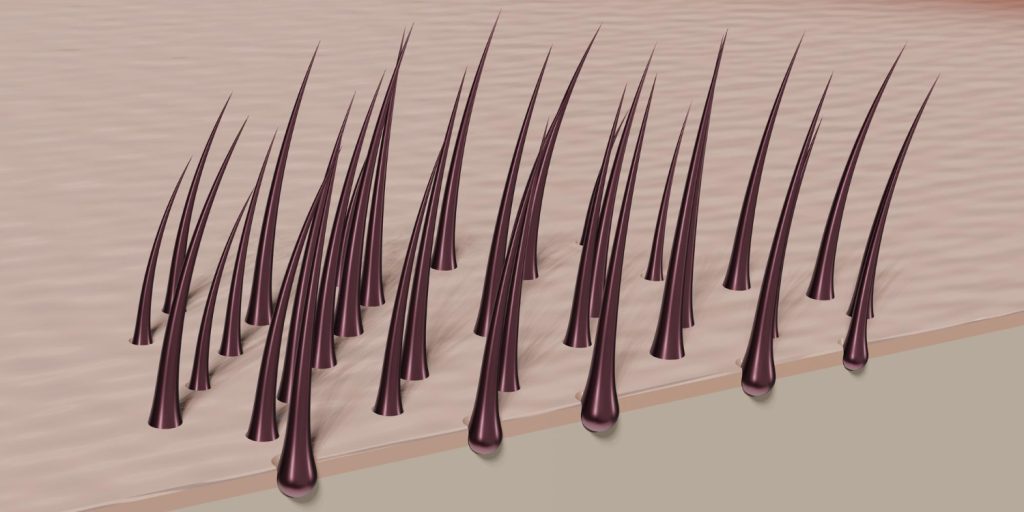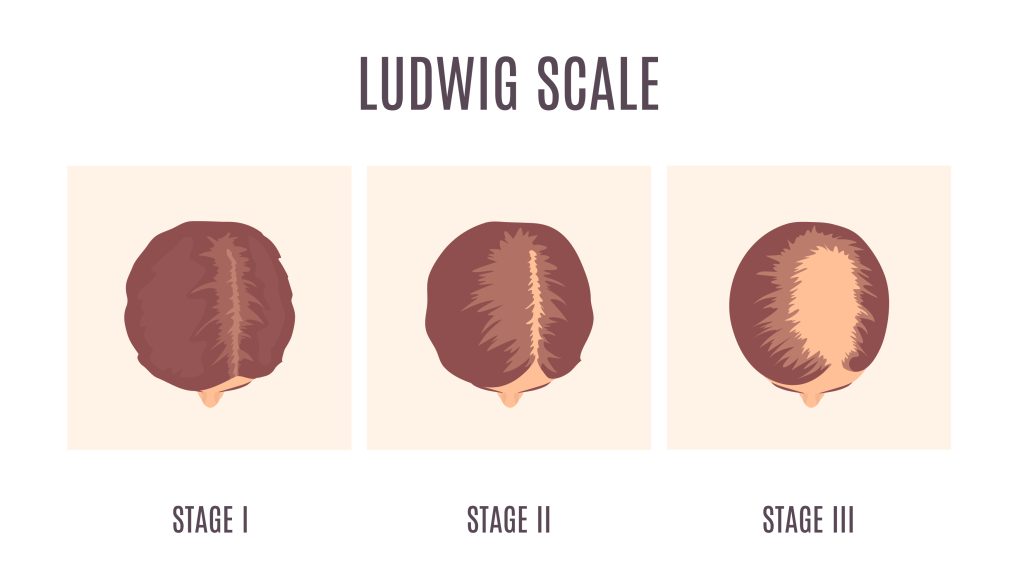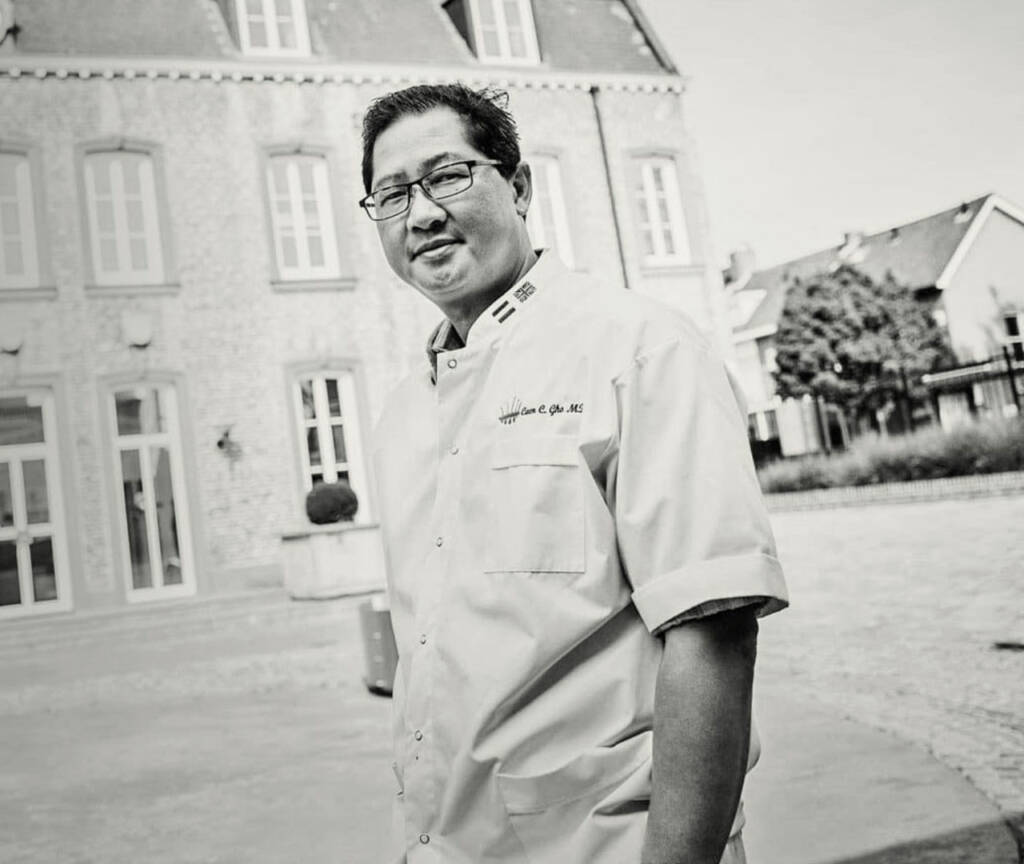Hair Loss and the Hair Cycle
How It Works
For patients suffering with hair loss, getting to the root cause can take time however; we are confident that with a bit of transparency and discovery we can find the solution or combination of solutions for your specific hair loss pattern. Physicians must take into account the hair growth cycle, gender specific hair loss patterns, heredity, diet, and environmental factors like stress. At Hair Science Institute, our specialists will review each of these factors to better determine a treatment protocol that sets the patient up for success.

The Hair Cycle
The reason patients most often see thinning and experience significant balding is because at some point in their journey, the hair’s follicular cycle became disrupted, shortened and ultimately stopped producing hairs, a process referred to as miniaturization. This period of time is most crucial in developing an effective treatment plan. Though it is not impossible, most hair loss doesn't happen overnight, rather, it is a progression over time. When experiencing the early stages of thinning the hair follicle transitions or cycles through different phases (growing, resting, and shedding). Our aim is to treat the follicle, not the hair. This is why it is important to fully understand the hair growth cycle.
The Hair Cycle Phases
Hair follicles are tube-like structures that exist in the top two layers of the scalp, the epidermis and the dermis. Beneath these two layers lies the hypodermis, which serves to insulate the body, store energy, and connect skin to muscle and bone. Each person is born with over 5 million hair follicles. The average person sheds between 75 and 150 hairs per day. What most people refer to as “hair loss” is not the shedding, but rather the stunted growth of each recurring cycle. Each follicle on your head goes through four specific phases. As these phases progressively shorten with age, genetics, or other aforementioned causes, this is a critical time for intervention. Understanding these phases help us to determine how we can encourage the follicle into the desired growth cycle.
Anagen-Growing Phase
85% of the hairs on your head are in the growing phase, which lasts from two to six years at an average growth rate of 10 cm per year and a maximum lifetime length of one meter.
Catagen-Resting Phase
Once hair follicles leave the anagen phase, they enter a transitional phase, the Catagen Phase, for a period of up to two weeks. This phase involves shrinking of the follicle to around ⅙ of its normal length and affects 1-2% of the hair on your head at any given time.
Telogen-Shedding Phase
Following the catagen phase, each follicle enter the Telogen Phase for approximately five to six weeks. 10-15% of the hairs on your head are in the Telogen Phase at all times. During the Telogen Phase, hair remains on the head, while the dermal paella below the root enters a resting phase.
Hair Loss Conditions & Disorders
You are not alone. In the United States alone, more than 35 million men and 21 million women suffer from hair loss. By 35 years old, 40% of men report hair loss, and by 80 years old that numbers grows to 70%. For women, 80% report some degree of hair loss by the age of 60. In a study of men and women conducted by the ISHRS, almost 50% of individuals suffering with hair loss indicated that they would be willing to spend their life savings to restore their hairline, but thanks to cutting edge therapies and tremendous social acceptance for taking action for hair loss, hair loss sufferers need not deplete their life savings or love in frustration.
At Hair Science Institute, our specialists work within each patient’s budget to create a customized treatment protocol that addresses their individual needs. The customized treatment protocol for each patient heavily relies on a transparent discussion and possibly pre-surgical testing ordered by your provider to identify any underlying hair loss conditions and disorders. Click on the links below to learn more about hair loss conditions and disorders that may be causing your hair loss.


Male Pattern Hair Loss
In 1975, Dr. O’Tar Norwood, a dermatologist and hair transplant surgeon, revised a series of hair loss classification in men. Today the Hamilton-Norwood scale classifies the stages of male pattern baldness using seven stages of hair loss. Treatment may include a combination of non-surgical and surgical therapies. In terms of hair restoration, a level two may require as few as 500 Follicular Units, whereas a level seven may require up to 6,000 over a series of several procedures. The number of grafts an individual needs to achieve optimal results varies and can be assessed and evaluated by a trained physician.
Female Pattern Hair Loss
Today the Ludwig scale classifies the stages of female pattern baldness (androgenic alopecia) using three stages of hair loss. Treatment may include a combination of non-surgical and surgical therapies. In terms of hair restoration, a level 2 may require as few as 500 Follicular Units, whereas a higher level may require up to 6,000 over a series of several procedures. The number of grafts an individual needs to achieve optimal results varies and can be assessed and evaluated by a trained physician.

GET PROFESSIONAL ADVICE
In a no-obligation consultation, the doctor will review your personal situation. From this medical diagnosis, we draw up tailor-made advice for you, worked out in a personal treatment plan. A consultation is free and non-binding. Together, we look at the options available to you.
WHAT DOES IT COST?
The cost of a hair transplant is determined partly by the number of grafts to be transplanted. How many grafts are needed for a successful Hair Stem-cell Transplant varies from person to person and from situation to situation.
Other factors also play a role: the quality of the donor hair, the course of hair loss, the health of the donor area, your overall health and your personal wishes. Colour and texture of the hair also determine the result, as we aim for natural coverage.
In short: an HST treatment is tailor-made. During a free, no-obligation consultation, the doctor will make a full medical diagnosis. Based on this, you will receive a personalised treatment plan including a cost quote.

GO FOR NATURAL RESULTS
Of all the hair transplant options, a Hair Stem-cell Transplant gives the most beautiful, natural-looking results. The transplanted grafts (hair follicles) are placed close together, ensuring high hair density and a natural-looking hairline.
We pay close attention to the original hairline. A common mistake with hair transplants is an unnatural or too sharp hairline that does not fit the face well. That is why we determine the ideal hairline in advance, together with you. This is how we achieve the most natural hairline.
WHY CHOOSE HST?
HST is a patented, sophisticated technique for hair transplantation, developed from decades of scientific research. The treatment is very safe and has a host of advantages over other hair transplant techniques: minimal scarring, fine-grained implantation, lifelong results and possibilities for hair restoration of facial hair (eyebrows, beard). The natural results of HST are second to none.
HST is performed exclusively at official Hair Science Clinics, with locations in Amsterdam, Maastricht, Düsseldorf, London, Paris, Cap d’Antibes, Milan, Dubai, Jakarta, Bali and Hong Kong. An international team of highly trained doctors and technicians provide top care to the highest medical standards.
- Highest medical standard, very safe
- Science-based
- Unrivalled results
- Preservation of donor area
- Quick recovery

CLIENT EXPERIENCES
We understand like no other that the decision to undergo a hair transplant is not one you make lightly. Good for you to know is that many thousands of men, women and children around the world already preceded you at Hair Science Clinic and are extremely happy with that choice.
THERE IS A SOLUTION
For many forms of baldness, a hair transplant is an optimal solution. In a no-obligation consultation, the doctor thoroughly examines your personal situation. From this medical diagnosis, you receive customised advice, worked out in a personal treatment plan. A consultation is valuable for you, but also for us.

